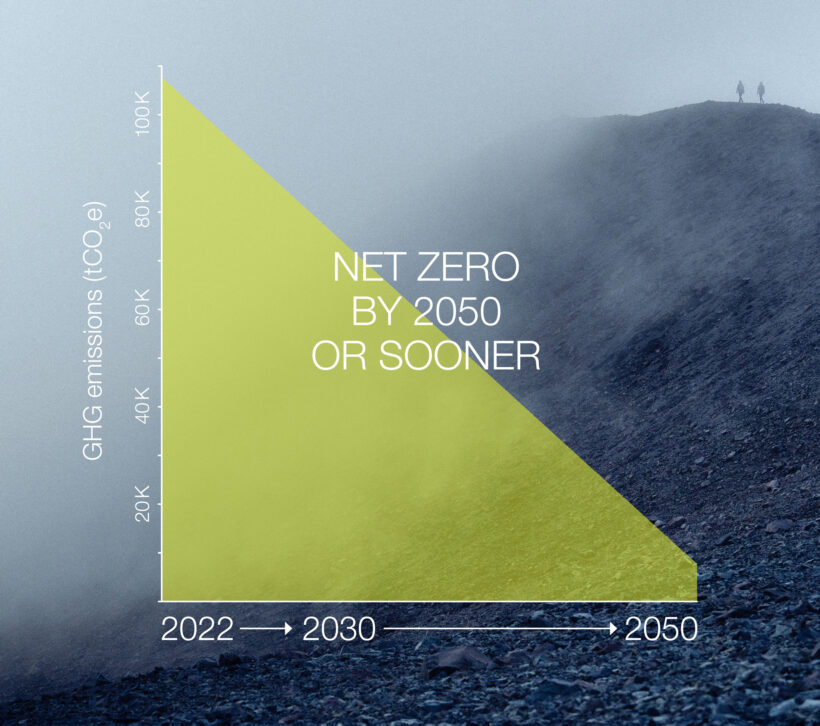Zeroing In on Net Zero
Today, we announce new climate targets that double-down on keeping Earth’s current warming within 1.5 degrees.
In 2020, Arc’teryx was one of the first outdoor brands, and one of the first Canadian companies, to commit to science-based targets to reduce our emissions intensity by 2030.
We significantly reduced our emissions measured against each dollar of revenue, including matching 100% of our operations’ energy use with the purchase of Renewable Energy Credits.
Now we’re zeroing in on the absolute amount of carbon we contribute to the atmosphere, to get our climate action in line with the latest science. We have improved data, greater ambition, and a growing sense of urgency: 2023 was the hottest year on record by a clear margin. Records were broken for ocean heat, sea level rise, Antarctic sea ice loss and glacier retreat. We can, and must, do more.
We’ve set new, ambitious targets, that are aligned with the Paris Agreement commitment to limiting climate change to 1.5 degrees.
Our new climate targets:

90% absolute reduction in our Scope 1 and 2 emissions by 2030, from a 2022 base year
This target focuses on reducing operational energy and fuel emissions from our Vancouver headquarters, Canadian production facility, our fleet vehicle, and global retail stores (known as our Scope 1 and 2 emissions). These emissions represent 1.3% of our total carbon footprint (based on 2022 data.)
“We’re turning our search for a better way to the most urgent challenge of our time — to redesign our ‘business as usual’ and leave it better.”
42% absolute reduction in our Scope 3 emissions by 2030, from a 2022 base year
Scope 3 emissions are those associated with our entire value chain – the materials, products, factories, mills, shipping, and distribution centres (apart from Arc’One), that enable the making, using, and end of life of our products, as well as emissions caused by business travel and employee commuting and other third-party services. These indirect emissions represent 98.7% of our emissions footprint (based on 2022 data).
This is the crux of the work. The science says this level of reduction is imperative to stay in line with a 1.5°C pathway and the timeline to 2030 is aggressive. It is our boldest objective yet.

Net zero by 2050 or sooner
2030 is our first milestone year. Hitting our 2030 goals means we could move to net zero even sooner than 2050.
As problem solvers, we see an opportunity in every broken thing, unmet need, and flawed system. Now we’re turning our search for a better way to the most urgent challenge of our time – to redesign our “business as usual” and leave it better. We’re zeroing in on net-zero emissions and keeping 1.5°C in our sights. The countdown has begun.









